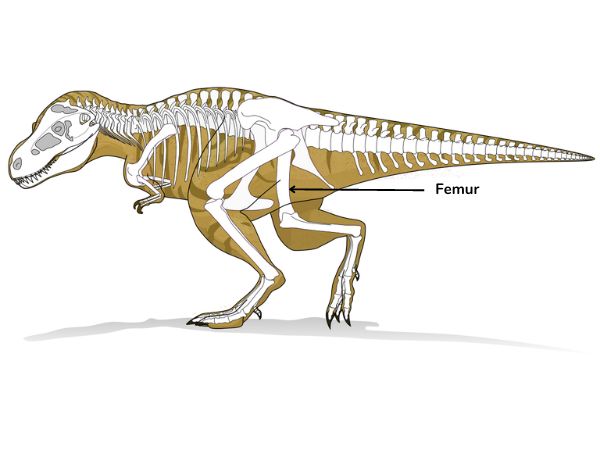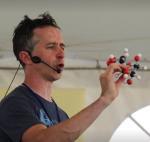Baby Giants: Just How Fast Did Baby Dinosaurs Grow?
The Dinosaurs Around the World exhibition is showing at the Science Centre until March 12, 2023. Most of us are fascinated with dinosaurs and how enormous they were. But did you know that their babies were actually very small compared to their parents? All the more reason for them to grow up super fast, it seems! Let’s take a look at how these babies grew into giants.
Teeny Tiny Eggs
If you could take a trip back in time and come across a dinosaur’s nest, you would be shocked to see just how small the eggs were, even if they were laid by these great big dinosaurs. How come? Well, in the animal world, there’s a limit to how big an egg can be. Even inside an egg, an animal still breathes although a bit differently than we do. It takes in oxygen through the eggshell and expels carbon dioxide from it too. But for this to work, the baby needs to be relatively close to it. The bigger the egg, the further away the baby animal is from the outside of the shell, which makes it difficult for this air exchange to happen. Take ostrich eggs, which are 18 cm from end to end, the biggest in the animal kingdom. In theory, that’s about as big as animal eggs can get. If they were any bigger, the babies inside wouldn’t be able to get the oxygen they need.
Is this also true for dino eggs? You bet. So, if dinosaur eggs couldn’t be very big, their babies couldn’t be very big either. Just imagine… The little babies of an enormous Brachiosaurus (which could weigh up to forty tons!) only weighed a few kilograms, say, the weight of a big carton of milk. That’s not at all like human babies and parents. A human baby is about 15 to 20 times lighter than its parents, but a baby Brachiosaurus was several thousand times lighter than its parents!
They Grow Up So Fast… Literally!
Baby dinosaurs may have started out really small, but they reached their adult size much faster than we do, and faster than modern-day reptiles too which grow quite slowly. Just how fast could those baby dinosaurs grow? Paleontologists discovered that giant sauropods (like the Brachiosaurus) could have big growth spurts, growing at a rate of 14 kg a day! That’s close to how fast blue whales grow and no modern-day mammal grows faster than blue whales.
How Do We Really Know How Fast Dinos Grew?
Short answer: the femur. Paleontologists get a real kick out of this leg bone that connects the hip to the knee, namely because the femur can tell a lot of stories. It’s always exciting when a femur is discovered at a dig site. First, femurs have growth rings, which lets paleontologists estimate how old a dinosaur was when it died. Isn’t that how we know how old trees are? That’s right! When an animal grows, its femur bones grow too, and you can see how fast they grew over different periods of time by looking at their growth rings. By cutting a femur bone (or better yet by X-raying it so as not to damage it), scientists can count the rings and know how old a dinosaur was when it died.

The size of the femur also offers great clues about how large the dinosaur was. Femur bones carry a tremendous amount of any animal’s weight, so it needs to be big enough and strong enough for the animal’s size. By measuring the thickness of the femur, we can get a pretty good idea of how much weight it was holding up.
So, thanks to the femur bone, we can know how OLD the dinosaur was and how HEAVY it was too. Then, by combining all the data collected from different specimens of different ages, we can eventually calculate what's known as the “growth curve” for specific dinosaur species. Still, other aspects of dinosaur bones can offer paleontologist clues about a species’ growth, like bone porosity. Under a microscope, a bone fossil is porous (a bit like a sponge). When this “sponge” has a lot of empty spaces, that means the bone had lots of blood vessels that flowed through these spaces. Blood vessels carry nutrients to the bone to help it grow. A more porous bone means more blood vessels which means it was still a growing bone. A bone that is less porous means it had fewer blood vessels which means it was done growing and belonged to an adult.
Still, It’s Tricky
Even with these neat tricks, it can still be difficult for paleontologists to know if a dinosaur bone they find belonged to an adult from a small species or a baby of a large species. The appearance of some dinosaurs changed as they grew older, and some looked so different when they were babies that paleontologists sometimes mistake them for other species. Take the Dracorex. This was a small dino whose head looked a lot like a dragon (that’s why they called it Draconex). Some paleontologists think it was actually a young Pachycephalosaurus, which would mean that the Draconex is not its own species but just a Pachycephalosaurus that hadn't grown up yet. (Learn more about the Draconex and four other astounding dinosaurs in this blog post)
Not so easy to reconstruct the lives of these creatures after so many millions of years. Gladly, science keeps moving forward and helps us learn more and more with every new discovery.
Sources :
https://www.snexplores.org/article/dinosaurs-grow
https://www.science.org/doi/10.1126/science.310.5755.1751a
https://gizmodo.com/gigantic-dinosaurs-had-to-grow-freakishly-fast-1772353616
https://www.sciencedaily.com/releases/2001/07/010730081218.htm
https://www.nature.com/articles/news040809-7
